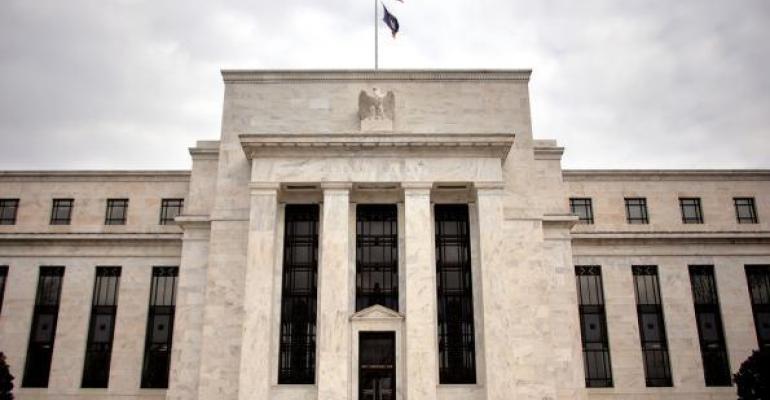By Brian Chappatta
(Bloomberg) --The bond market may finally be getting the Federal Reserve’s message.
Traders are already mostly on board with the central bank raising rates at its June meeting, pricing in odds of a hike at almost 80 percent, judging by the current effective fed funds rate and the forward overnight index swap rate. But they’re also growing more confident that the Fed will go again in September, with the probability of such a move approaching 40 percent on Tuesday, about double what it was a week ago.
Financial markets aren’t waiting to find out if this is the year Fed policy makers stick to their forecast, which is for two more hikes in 2017. Two-year yields touched 1.35 percent Tuesday, the highest since March, while the Bloomberg Dollar Spot Index reached the strongest in almost a month. Both were little changed Wednesday.
“The Fed is very consistent this year: They’re saying, from their standpoint, the unemployment rate and the path it’s going is below where they think is full employment,” said John Herrmann, director of rates strategy at MUFG Securities Americas Inc. “It’s consistent with removing accommodation further at the June meeting, and perhaps at the September meeting like we expect.”

Fed officials said last week that they view a recent deceleration in economic growth as likely to be transitory, meaning they could continue raising rates as soon as next month. That stance gained credibility two days later when the jobless rate unexpectedly dropped to 4.4 percent, the lowest since May 2007.
Market-based measures of inflation expectations, meanwhile, remain close to the Fed’s 2 percent target. While down from January’s highs, the U.S. 10-year breakeven rate is 1.86 percentage points, compared with about 1.6 percentage points a year ago.
Among regional Fed speakers Tuesday, the Dallas Fed’s Robert Kaplan repeated that three rate increases in 2017 was his baseline view, while Kansas City’s Esther George cautioned against overreacting to every move in economic data and said the central bank doesn’t need to pause its normalization process.
‘Big Change’
“The big change was the Fed’s communication around the slowdown in first-quarter data,” Jeffrey Rosenberg, chief fixed-income strategist at BlackRock Inc., said in an interview on Bloomberg Television. “They were very explicit in the statement to acknowledge that the slowdown was not going to take them off message, and that really helped the market.”
Of course, the September odds are far from a sure thing, and even a June hike could get derailed by weak economic data or a shock to markets. Yields fell from the day’s highs in afternoon trading in New York Tuesday after Sky News reported that a North Korean diplomat said the country will proceed with a sixth nuclear test.
But to Herrmann, the complacency that’s permeated fixed-income markets may be starting to shatter. And that means yields, particularly on shorter-term notes, are on their way up.
“The bond market always took the under on the Fed’s rate hikes,” Herrmann said. “This year, I’m telling you, I think it’s a big mistake.”
--With assistance from Scarlet Fu and Edward Bolingbroke.To contact the reporter on this story: Brian Chappatta in New York at [email protected] To contact the editors responsible for this story: Boris Korby at [email protected] Mark Tannenbaum, Dave Liedtka




